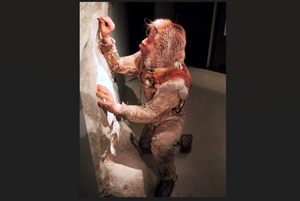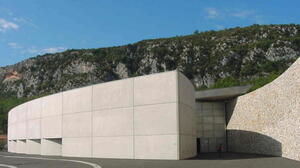Quinson — the largest prehistoric museum in Europe
Prehistoric men were not very different from us. They liked to live in sheltered, dry and sunny homes, preferably with a view and not too far from work—that is, from the hunting grounds and flint rocks which supplied them with food, clothing, weapons and tools.
Some 400,000 thousand years ago, such a group of men, not quite "sapiens" yet but on the verge of "discovering" fire, found just the place they were looking for: a large, deep cave with a wide terrace overlooking the Verdon River valley, close to what is now the village of Quinson.
Located 35 kilometers east of Cadarache, Baume Bonne—from the Provencal word "Baume," which means "cave"—is one of the earliest examples of an organized prehistoric habitat. Since the first settlements there, the cave has been home to various populations: pre-Neanderthals and Neanderthals, Homo Sapiens, Bronze Age groups, Neolithic herdsmen and Gallo-Roman communities. During the French Revolution, in the 1790s, the cave was transformed into a clandestine church where resistant priests celebrated mass. Archaeological explorations, which began in 1946, have brought to light some 80,000 prehistoric artefacts, from bone pins to the most elaborate flint blades.
Ten years ago, the General Council of Alpes-de-Haute-Provence commissioned world-renowned architect Sir Norman Foster to design a museum to host part of this outstanding collection and present to the public, through permanent and temporary exhibits, the million year "Adventure of Man" in Provence.
Architecturally daring, "echoing the concept of cave-dwelling" in a striking contemporary building, the Musee de Prehistoire des Gorges du Verdon is the largest prehistory museum in Europe. Both educational and fun, it is a spectacular showcase of our own beginnings.



